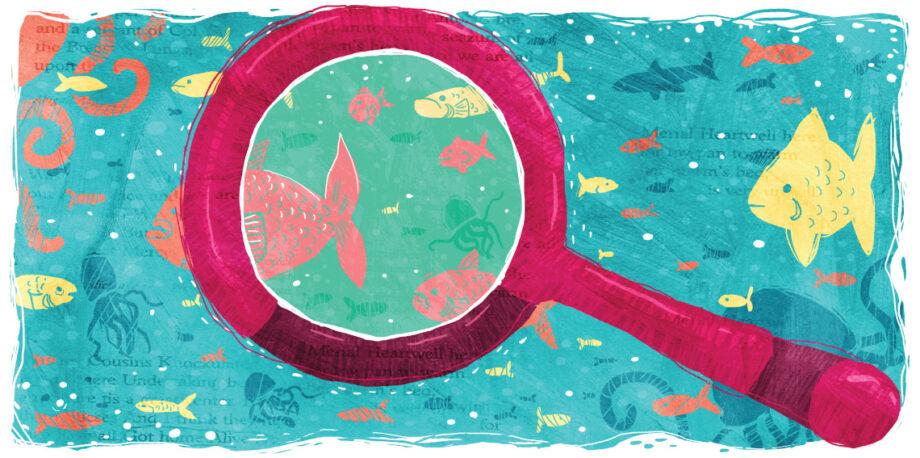April 23, 2014 — The staff at Chicago’s Shedd Aquarium thought they were conservation conscious. After all, the Shedd, home to more than 25,000 animals, houses its own conservation research institute. If anybody should know how to make efficient use of resources, it’s this place. But, in 2008, the aquarium set itself an ambitious conservation goal — cut the amount of water it consumed in half by 2018 based on 2007 levels. What the aquarium learned is just how easy it is, even for professional conservation experts, to miss the waste right under your nose.
Although the goal seemed lofty, the aquarium found itself within 5 percent in just six years — nearly half the amount of time it had allotted. It didn’t do this by reducing capacity; in fact, during the same time period the number of animals and exhibits grew. Instead, says Roger Germann, executive vice president of the Great Lakes and Sustainability department at Shedd, the aquarium went after filter systems that ran too long, inefficient skylights that caused water in exhibits to evaporate too quickly, and water chillers that were outdated and didn’t work well. Turns out, that low-hanging fruit was responsible for the Shedd using 26.4 million gallons of water per year it didn’t actually have to use. The problems were easy to fix, but they were hard to see until the staff took a closer look and started asking questions about the basic functions of the aquarium like, “How long should the pumps and filters run, anyway?”
Real-world examples, big and small, show that the best way to reduce your resource consumption is to start questioning those norms. And to ask the right questions, you need the right information.
Huge amounts of resources — whether in the form of water or energy or trash — are wasted every day because such waste is built into systems and practices we consider normal. Real-world examples, big and small, show that the best way to reduce your resource consumption is to start questioning those norms. And to ask the right questions, you need the right information.
Think about the lights in your house. While conservation awareness (and/or your parents) may have taught you to flip the lights off when you leave a room, it’s likely that you’ve never considered how much light you need when you’re in the room. “Chances are, you really only need 50 percent of the lighting you use most of the time,” says Matthew Gudorf, energy manager at the University of California, Irvine.
Curt Volkmann, senior clean energy finance specialist for the Environmental Law and Policy Center, calls that “actionable insight” — information about the many ways you can conserve and be more efficient that aren’t obvious. Americans have done pretty well on basic energy awareness, he says. But there’s still a great deal about the way we use energy that remains invisible. Another case in point: “phantom load,” a phrase that energy experts use to refer to the electricity consumed by home electronics like televisions, computers and DVRs — even when we think we’ve turned them off. That silent power draw can add up. A single DVR can suck down as much as 390 kilowatt-hours of electricity every year — as much as some full-sized refrigerators.
Most of the time, we pay attention to the services we get from energy — whether we can watch the shows we like, whether our lights come on when we flip a switch. How much energy it takes to get those services (and whether we could get the same services for less) is a mystery.
Studies have shown that sustained, frequent feedback about personal energy use is the best way to demystify energy while also changing people’s behavior. That feedback can be about cost, or it can tie abstract energy use to real-world environmental impacts, or it can show how your energy use compares to that of your neighbors. However it’s done, the goal is to make the invisible, visible — the same way the Shedd Aquarium made invisible waste appear with the help of research.
Here’s another scaled-up example: At UC Irvine, facilities managers, including Gudorf, were able to cut the energy consumption of nine research laboratories by 50 percent or more. In buildings like these, most of the energy used goes for air circulation — pumping in fresh air, heating it or cooling it, distributing it throughout the building, and then sucking it up, filtering it and blowing it back outside. Before the efficiency efforts, this whole process happened roughly seven times an hour, 24 hours a day, seven days a week. It’s easy to look at that schedule and suspect that you could reduce waste by running the air cycle less frequently when nobody is working in the laboratory. After setting up the system with occupancy sensors, Gudorf and his colleagues got part of their energy reduction by doing just that.
But more important, Gudorf says, was their decision to question how often the air needed to be circulated when people were working. Why was the air circulated seven times an hour? Ostensibly, it was an issue of air quality and safety. You want to make sure that any fumes, bacteria or other contaminants released during research are pulled out of the air that people have to breathe. But those norms were based on old data and weren’t specific to the architecture or conditions of the buildings at UC Irvine. Instead of accepting the norm of seven changes an hour and trying to figure out how to save energy despite that handicap, Gudorf and his staff tested their assumptions and found that they could get the same air quality at four changes per hour. On the weekends, when the building is less occupied, they can go as low as two.
Waste, it turns out, isn’t primarily about willful disdain. Instead, it’s about a lack of awareness — the places we don’t look, the questions we don’t ask and the everyday assumptions we don’t challenge.
Back on the small scale, most people don’t have the time to do detailed studies of how their homes work. Instead, Curt Volkmann and his colleague Rob Kelter say that smart meters, smart thermostats and automated systems can serve the same function. These tools help by providing the kind of feedback that leads to behavior change; for instance, a smart meter can tell you how your energy use compares to a local average. They also make behavioral change easier by making it possible even when you aren’t directly thinking about it. A smart thermostat can make sure your house stays at a comfortable temperature without having to run heating and cooling systems when you aren’t home. Light sensors can automatically adjust lighting levels to make people comfortable for less energy use.
The point, though, is that these systems — like the research done by the Shedd and UC Irvine — change the way we use energy by breaking the inertia of “we’ve always done it this way.” Waste, it turns out, isn’t primarily about willful disdain, like tossing an empty beer can out the window of a moving car. Instead, it’s about a lack of awareness — the places we don’t look, the questions we don’t ask and the everyday assumptions we don’t challenge. If we’re going to seriously reduce the amount of energy we use, it’s that awareness we have to go after.
As Gudorf says, “Changing the question changes the game.” ![]()
Editor’s note: The views expressed here are those of the author and not necessarily of Ensia. We present them to further discussion around important topics. We encourage you to respond with a comment below, following our commenting guidelines, which can be found on this page. In addition, you might consider submitting a Voices piece of your own. See Ensia’s Contact page for submission guidelines.
Ensia shares solutions-focused stories free of charge through our online magazine and partner media. That means audiences around the world have ready access to stories that can — and do — help them shape a better future. If you value our work, please show your support today.
Yes, I'll support Ensia!
